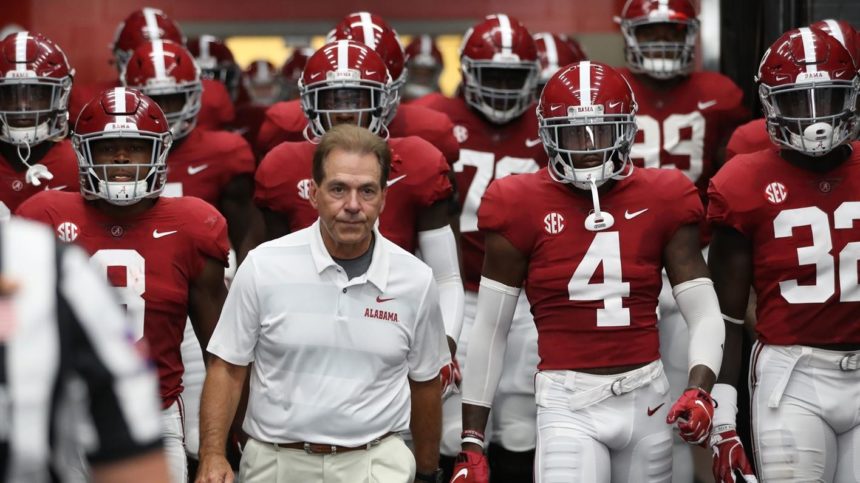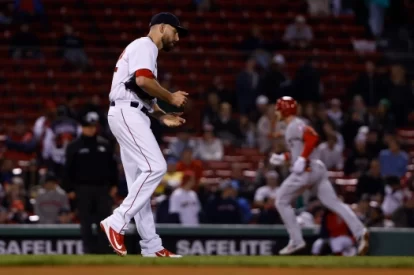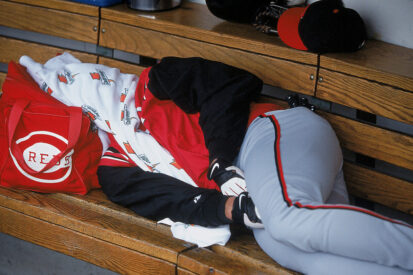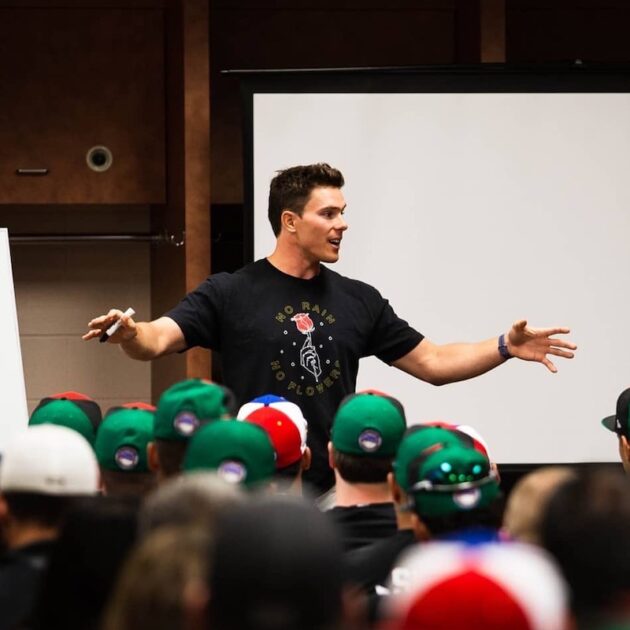“Leadership is about inspiring people to accomplish what they thought they couldn’t do, whereas management is about persuading people to do what they never wanted to do”
– Steve Jobs
Vision
All great teams and companies have a firm sense of belief in the organizations vision. Without a compelling vision, there would be nothing for the team to rally behind to achieve the desired results. Apple has the vision of positively influencing humanity for years to come. Alabama football has a vision to develop young men as leaders in society year in and year out. So how do we develop a compelling vision for our program?
Step 1: Create an Inspiring Mission
Motivation is temporary fulfillment… INSPIRATION is everlasting change. Leaders must inspire their team to believe in the organizations vision. If few people in the program are not on board with the team’s mission, then failure is inevitable. We must encourage our teams to develop a mission statement that begins with them. This is how a winning culture is created.
A mission statement is not the coach’s goals and aspirations for the season. An effective mission statement is created by the entire team collectively. This must be compelling enough to inspire accountability and action without the coach having to micromanage the athletes. All teams want to win a championship…. And rightfully so. There is nothing better than dog piling on an opposing teams’ mound after celebrating a conference championship. But our mission must be more than that.
An example of an effective mission statement would be this:
“Our mission is to inspire each other every day through hard work and accountability so that we can develop into the best versions of ourselves for everlasting success!”
This is a compelling mission statement. The team has committed to hard work and accountability in hopes of achieving the best version of the team by the end of the year. If we focus on the daily process of becoming great, then greatness will be sure to follow!
Step 2: Build Strong Relationships
We hear it all the time that sports will bring us relationships that will last forever. But when we are in the current moment, it is much tougher to see the truth in this statement. Selfishness is the enemy of success, while selflessness is the key to building everlasting relationships. As a coach, we must connect with our athletes on a personal level. Without trust, success is hard to find.
This takes tremendous vulnerability as a coach to build healthy relationships with our teams. We must admit when we make mistakes and take ownership of our own personal faults. This can be extremely difficult to do but is necessary if we want to build a culture that lasts forever. The best coach’s in the world are really good at connecting with their athletes on a personal level. This bond becomes unbreakable and our athletes will buy in to the philosophy and mission statement of the team.
To build trust amongst your team, try sharing a personal story that no one knows about you. This is a great way to connect with your athletes on a deeper level than the sport itself. Empathy is a great way to build trust. The power of empathizing with your team can build bonds that are stronger than any adversity that comes your way. This shows that you too are human and make mistakes, and that we are all fighting our own inner battles. Once trust is built, it is extremely hard to break.
Step 3: Model the Behavior
Standards and expectations are a must if we want to develop a winning culture. But a massive problem occurs when the coach does not model the behavior that they want to see in their players. How many times have you seen a coach throw a tantrum on the sidelines after a bad call? Odds are the coach told their athletes to never talk back to an umpire, yell at a referee, or confront the opposing team. So why would you, as the leader of your program, go against your own rules?
Clear standards are essential to building a winning culture that lasts generations. Coach’s must be committed to the team’s rules and embody the behavior of a leader. Our athletes are always watching how we respond to situations on and off the field. If an athlete notices the coach showing bad body language, then they will inevitably follow suit. In the same way, if an athlete notices a coach staying calm, collected and confident in adverse situations, they will begin to model that exact same behavior. This is how championship teams are built.
Leadership starts at the top. It begins with the head honcho and trickles down to the rest of the team. A coach must model the behavior and character of that in which they are trying to implement into their program. Our athletes are watching our every move in the heat of adversity, so how will you choose to respond?
Conclusion
The greatest leaders in the world empower their athletes to make mistakes and to fail big. Without failure, there is no way we could ever learn how to grow. Growth comes from empathizing with our athletes, empowering them to make decisions, and encouraging them to fail without worrying about the consequences.
As Yoda mentioned in the famous film Star Wars,
“The greatest teacher, failure is”
Encourage FAILURE! Be BOLD! And never be afraid to DREAM BIG!
– Austin Byler, Co-Founder of Major League University
Interested in learning more about Major League University? Follow us on our social media platforms below!
IG: @MajorLeagueUniversity
Twitter: @MajorUniversity
Facebook: www.facebook.com/MajorLeagueUniversity
YouTube: Major League University
Podcast: www.soundcloud.com/championsschool








